TREASURES O F MALTA

No. 85, Christmas 2022, Vol. XXIX No. 1
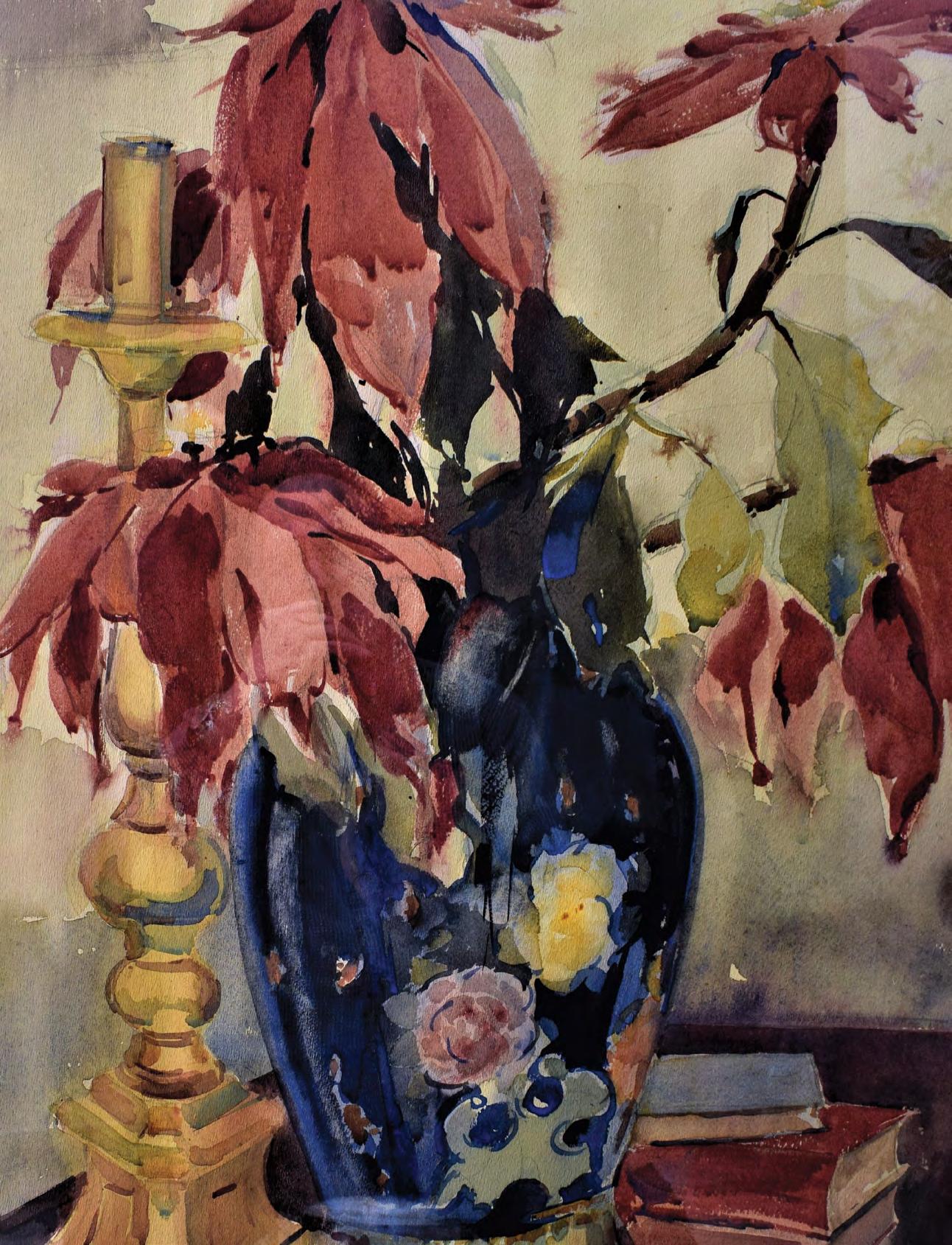
FONDAZZJONI PATRIMONJU MALTI
MISSION STATEMENT
Our mission is to collect and disseminate information, and to assist with research into the culture and historic heritage of Malta ~ to organize in Malta and overseas, independently or with others, exhibitions, seminars and other activities with the aim of promoting and spreading knowledge of the cultural heritage of Malta ~ to produce publications, catalogues, books, documents and other material that reflect the aim of our Foundation.
 FONDAZZJONI PATRIMONJU MALTI
FONDAZZJONI PATRIMONJU MALTI
28
12
Antonio Cassar: An unknown Maltese ‘architectore’ in 17thcentury Scicli
Through hitherto unpublished archival findings, Arnold Cassola presents new insights into the cultural links between Malta and Scicli
20
‘In segno di gratitudine ed affetto’: The marble frontispiece on the main entrance to the Auberge d’Italie
Sandro Debono discusses new insights related to the authorship, provenance, and use of marble on the façade of one of Valletta’s most prominent buildings
The Unfamiliar Sculptures of Ġanni Bonnici (1932–2019)

Louis Laganà looks at some of the unconventional works by sculptor Ġanni Bonnici
36
St Augustine’s Cemetery in Gozo, the Knights Templar, and Freemasonry


Thomas Freller speculates on the possible masonic connections of some enigmatic carved limestone slabs from a French cemetery in Gozo 47
Priest, Scholar and Curator: Monsignor Edoardo Coleiro (1914–1996)
Nicholas Joseph Doublet
Warriors, Garrisons, Militias and Fortifications in Malta Through the Ages (2000 BCE –533 CE)
Charles Debono 67
Augmented Memories: Embodying history and processes from layers to elements Guillaume Dreyfuss and Charlene Jo Darmanin 75 My Favourite Object Robert Thake 79 The Cover Giovanni Bonello 80
Drawing Meaning to Drawings: A Sketch by Antoine Favray Roger De Gaetano
83
The World Heritage Convention at 50 and Malta
Anthony Pace 91 Bookshelf
Giulia Privitelli 93
A subject index to the illustrations in Treasures of Malta, Vol. XXVIII
Paul Xuereb 96 Index: Treasures of Malta, Vol. XXVII 97 Cultural Review Cecilia Xuereb 99
Calendar Highlights Antonia Critien
85
· Christmas 2022 · Vol. XXIX, No. 1

Giuseppe Arcidiacono, Still life with Christmas flowers, books and a candlestick, watercolours, signed and dated, 1936. (Private Collection, Malta / Photo: Peter Bartolo Parnis)
1 · Treasures of Malta 85, Christmas 2022
53
2 Editorial
Contents
Te Chairman and Board of Governors of Fondazzjoni Patrimonju Malti would like to thank the following donors for their support





ASSOCIATES




BENEFACTORS



 THE MARTIN LAING FOUNDATION MR JEAN CLAUDE GANDUR
THE MARTIN LAING FOUNDATION MR JEAN CLAUDE GANDUR

CORPORATE SUPPORTERS

A full
of
and Corporate
may be found on the following page FONDAZZJONI PATRIMONJU MALTI
list
Personal
Patrons
Te Chairman and Board of Governors of Fondazzjoni Patrimonju Malti would like to thank the following donors for their support
PERSONAL SUPPORTERS
Mr & Mrs Andrew Hamish Forsyth
Simon Abrahams & Francesca Del Rio
Mr & Mrs Neville Agius
Baroness Apap Bologna Sceberras D’Amico lnguanez Simon & Annabelle Ellul Sullivan Mrs Janatha Stubbs Mr Andrew Norman Vincenti
Atlas Insurance – Mr Matthew von Brockdorf
CamilleriParis Mode – Mr Paul Camilleri
Curmi & Partners Ltd – Mr David Curmi
Eden Leisure Group – Mr Ian De Cesare
Eyetech Ltd – Mr Patrick Cutajar
Forestals Group of Companies – Mr Tancred Tabone
GasanMamo Insurance Ltd – Mr Julian Mamo
Gianpula – Dr Roger de Giorgio
Good Earth Distributors Ltd – Mr Matthew de Giorgio
GVZH Advocates – Dr Albert Grech
IIG Bank (Malta) Ltd – Mr Raymond Busuttil
Joinwell – Mr Sebastian de Giorgio
Kite Group Limited – Mr Gordon Pisani
Lombard Bank Malta plc – Mr Joseph Said
PATRONS PERSONAL CORPORATE
Mapfre Middlesea plc – Mr Martin Galea Miller Distributors Ltd – Mr Malcolm G. Miller O. F. Gollcher and Sons Ltd – Mr Karl Gollcher PwC – Mr David Valencia

RiskCap International Ltd – Dr Paul Magro Rizzo, Farrugia & Co. (Stockbrokers) Ltd – Mr Vincent J. Rizzo
Satariano – Ms Natasha Chapelle Paleologo Shireburn Sofware Limited – Ms Yasmin de Giorgio
Sigma Coatings (Malta) Ltd – Mr Anthony Critien
Te Alfred Mizzi Foundation – Mr Julian Sammut Tug Malta Ltd – Mr John E. Sullivan
Virtù Steamship Co. Ltd – Mr Charles A. Portelli
Water Services Corporation – Mr Karl Cilia
(As at time of going to press) FONDAZZJONI PATRIMONJU
MALTI

Fig. 1 An aerial view of the ‘Torre Triangolare’ foundations as seen today.

(Photo: Antonio Zimbone)
Antonio Cassar
An unknown Maltese ‘architectore’ in 17th- century Scicli
Through hitherto unpublished archival findings, Arnold Cassola presents new insights into the cultural links between Malta and Scicli
The Sicilian town of Scicli has been a port of call from Malta for at least the past nine hundred years. Historian Ivan Grech writes: ‘While for pre-Hospitaller Malta, Scicli was primarily a trading post, convenient for the barter of commodities with Sicilian products, for early modern Malta it became the most immediate gateway to Christendom and an ever-expanding world’. Basically, to put it in Grech’s words, Scicli, ‘largely inconsequential to the major Mediterranean traffic and salient events of any age, was in many ways more relevant to Hospitaller Malta than diplomatic powerhouses like Madrid or Paris. Scicli and its relevance to the Maltese archipelago can in fact constitute a most apposite example of microhistory’.1
The Maltese are believed to have had quite a number of connections with ‘Beato Guglielmo’, a hermit who was born in Noto in 1309 but lived in Scicli until his death in 1404. He is still revered by Sciclitani today. One of the miracles that earned Guglielmo his beatification during his beatification process in 1537 was performed on a Maltese man who went over to Scicli
Professor Arnold Cassola, academic and politician, is a Senior Fellow at the University of Malta and has also been invited as a guest lecturer in many foreign universities. He is the author/editor of numerous publications on the history, literature, language and culture of Malta, Maltese migration in Sicily, the cultural relationship between Malta and Italy, as well as books on Green politics in Malta and Europe. He is a recipient of the 2020 National Book Prize.
13 · Treasures of Malta 85, Christmas 2022
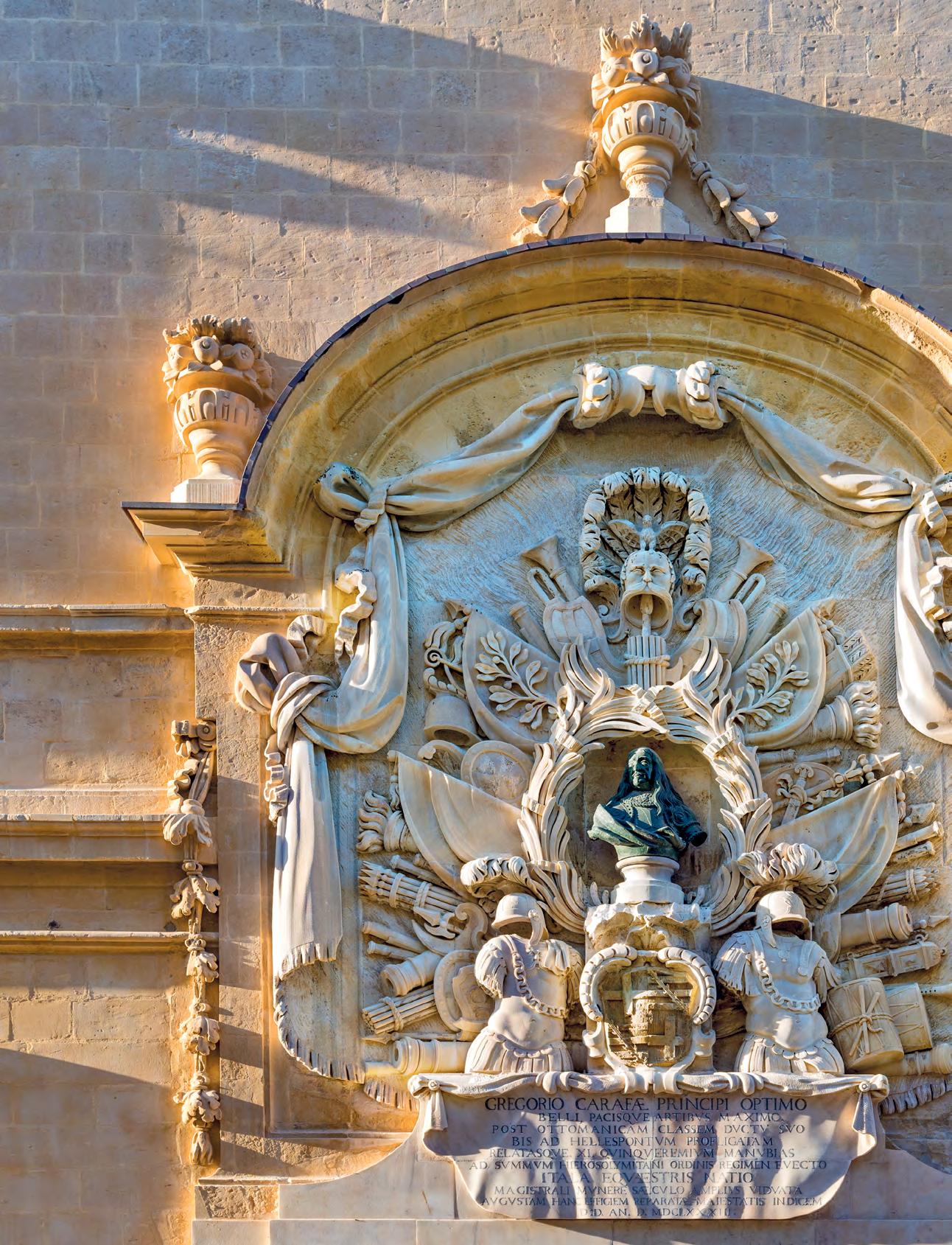
Fig. 1
Marble frontispiece and the bronze bust of Grandmaster Gregorio Carafa above the doorway of the Auberge d’Italie, Valletta, after restoration.
In segno di gratitudine ed affetto
The marble frontispiece on the main entrance to the Auberge d’Italie
’
Sandro Debono discusses new insights related to the authorship, provenance, and use of marble on the façade of one of Valletta’s most prominent buildings

The marble frontispiece on the main façade of the Auberge d’Italie serves the purpose of a most fitting backdrop to the bust of Grandmaster Gregorio Carafa (1615–1690). A selection of arms, armour, weaponry, and other military paraphernalia are laid out all around the Grandmaster’s bust, set in a niche surrounded by palm fronds with his coat of arms prominently set underneath. Hangings lined in ermine serve the purpose of a backdrop denoting Carafa’s princely stature. The frontispiece is nestled within an arched architectural frame and set on a plinth from which hangs an inscription celebrating the Grandmaster’s virtues and achievements. It is perhaps one of the most prominent baroque expressions of power and status in Valletta celebrating the prestige of Grandmaster and Langue on a public building connected to both. I shall here discuss new archival and bibliographical material referring to its hitherto partially unknown authorship, the provenance and use of marble secured for this project, and the reasons why this project was commissioned.1
Sandro Debono has a Ph.D in H eritage Policy and Collections Development (University College London), is a museum consultant, academic, and art historian.
21 · Treasures of Malta 85, Christmas 2022
‘
(Photo: Daniel Cilia)
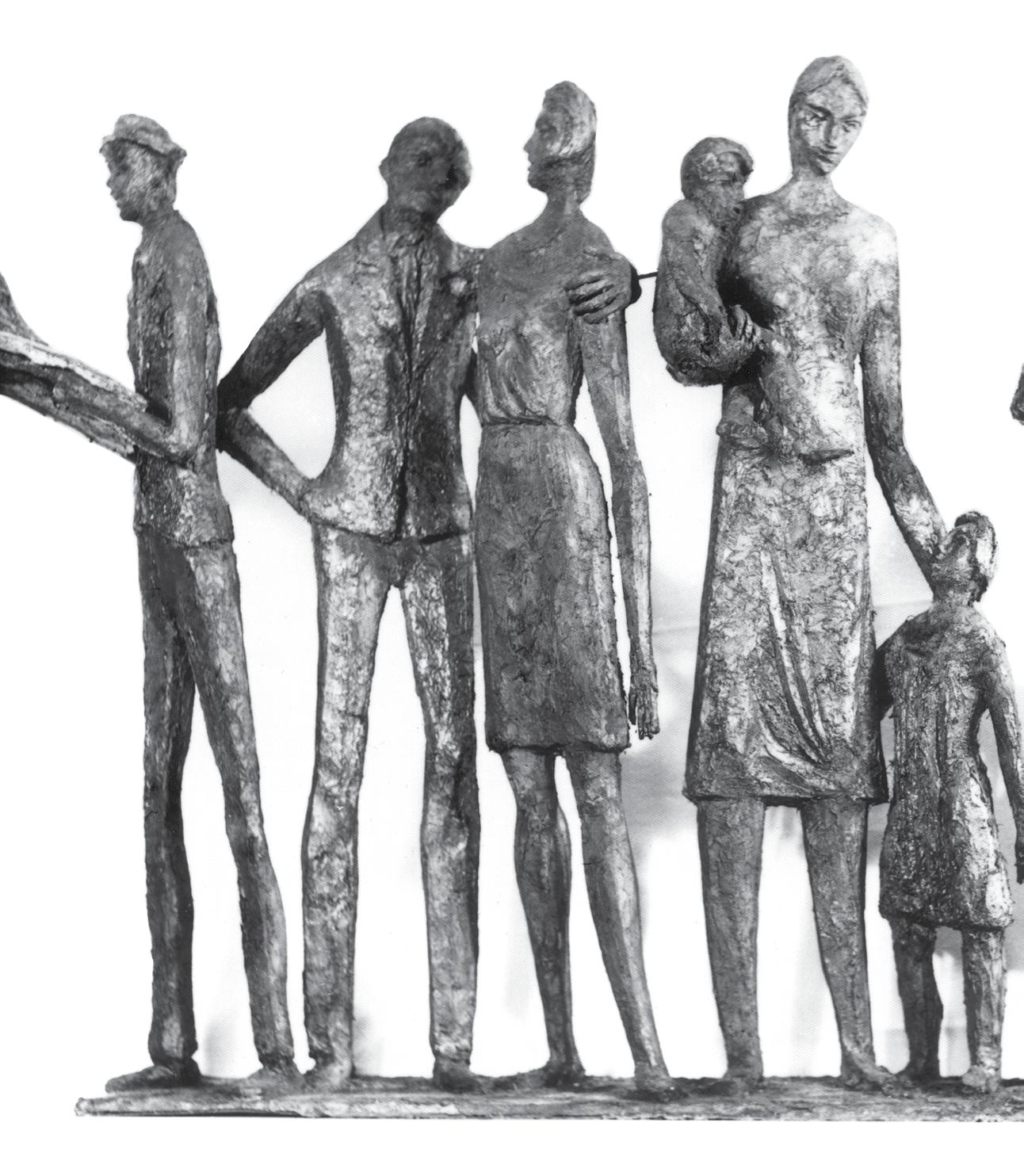
Fig. 1 On the Bus Stop, plaster, undated (c.1950s). (Courtesy of Hermann Bonnici)

The Unfamiliar Sculptures of Ġanni Bonnici (1932–2019)
Louis Laganà looks at some of the unconventional works by sculptor Ġanni Bonnici
Most people know and remember Ġanni Bonnici for his largescale monumental sculptures found in many places in Malta, particularly for his four metres-high Independence Monument found at the Mall, Floriana, facing the entrance to Valletta. There is, however, another facet of Bonnici’s sculpture, and his sculptural production was split between public and private works. Many are not so familiar with such works, with his devoted representation of the human figure in a simplified form. Stylistically these works are distinct from his academic rendering of his subjects. Yet, they represent symbols of universal meaning for all viewers.
Louis Laganà Ph.D (Lough), is an Associate Professor at the University of Malta, an art historian, critic, and practicing artist. He lectures on Art and Psychoanalysis, and the Arts, Health and Wellbeing.
29 · Treasures of Malta 85, Christmas 2022
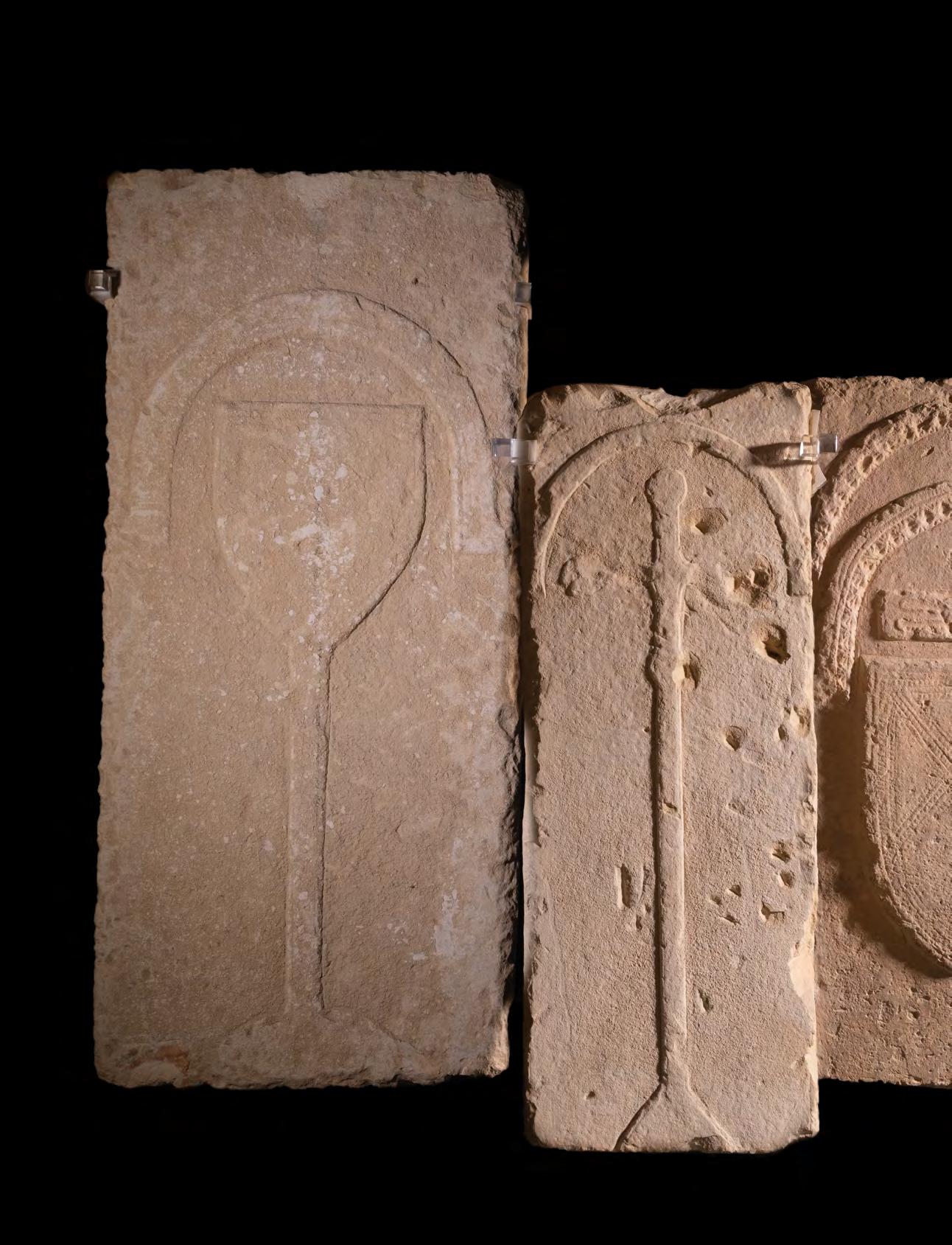
Fig. 1
Carved limestone slabs from St Augustine’s Cemetery, Gozo.
(Gozo Museum of Archaeology / Courtesy of Heritage Malta / Photo: Steven Psaila)
St Augustine’s Cemetery in Gozo, the Knights Templar, and Freemasonry
Thomas Freller speculates on the possible masonic connections of some enigmatic carved limestone slabs from a French cemetery in Gozo
The demolition in 1946 of the cemetery in the district previously known as Ta’ Fejn Santu Wistin, near the church and convent of the Augustinian Order in the suburbs of the Gran Castello of Rabat-Victoria, has certainly been one of the many disasters which Maltese cultural heritage suffered over the past centuries. How widely the enigmatic medieval stone slabs on the cemetery’s walls once attracted the international communitas litteraria is shown by intellectual heavyweights such as Carl August Böttiger, Joseph von Hammer-Purgstall, or Friedrich Münter trying to unveil their secrets.
Their interest has to be seen in relation to the then current scientific schools of thought and Zeitgeist; indeed many of the eighteenth-century writers had very special ideas about the Gozitan stone slabs’ date of origin, purpose, and symbols.
Thomas Freller currently teaches Cultural Sciences and German Studies at the University of Applied Sciences in Aalen. He has published over thirty books and several papers, and his special areas of research and study are Spanish, Sicilian and Maltese history in the sixteenth and seventeenth centuries, the phenomenon of Christian pilgrimage in early modern times, and literary frauds and charlatanism in early modern Europe.

37 · Treasures of Malta 85, Christmas 2022
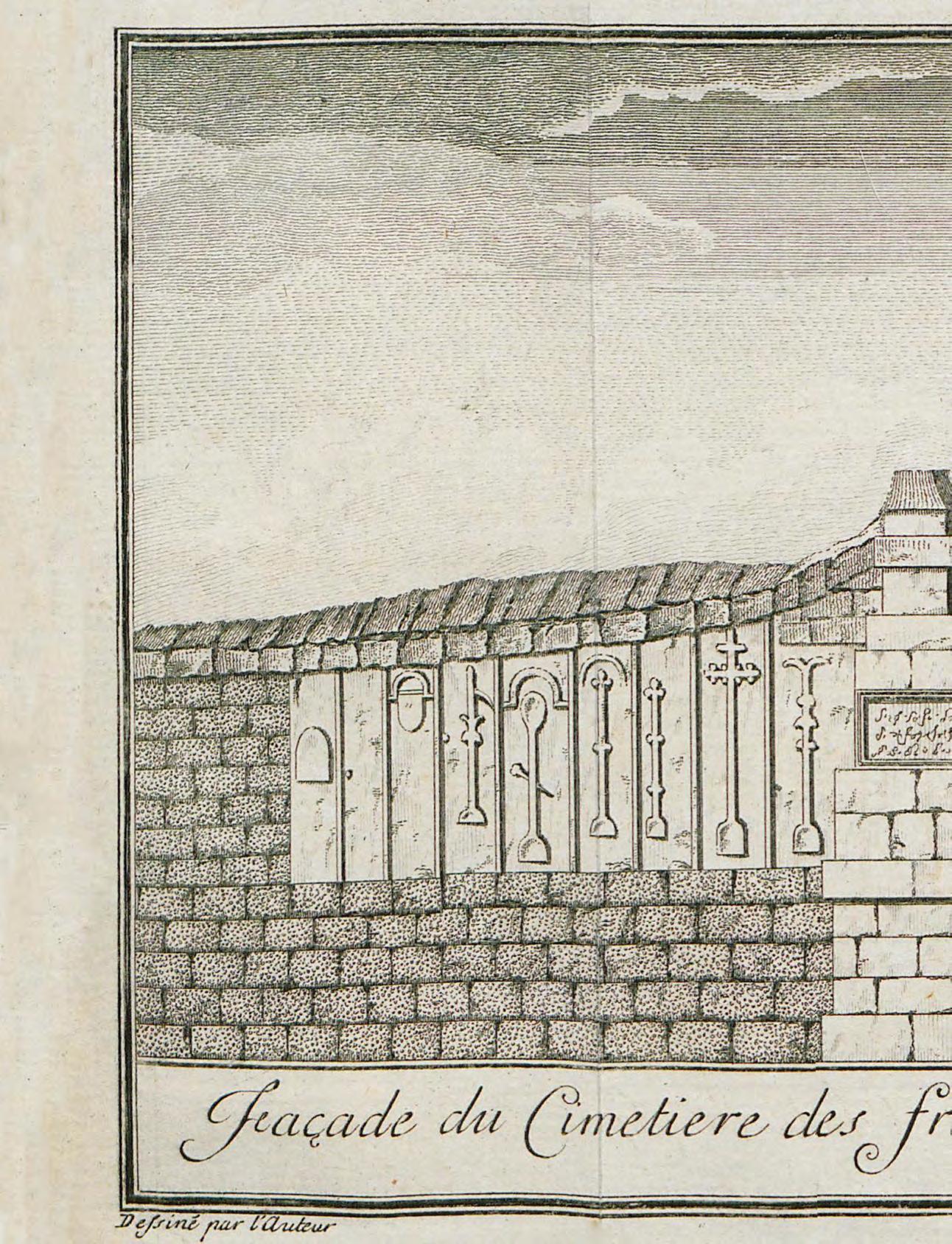


Above all, Coleiro was a priest: a man fully committed to the social dimension of the Gospel, in his attentiveness to those most in need. For the ancients, the scope of history was to provide moral examplars for the present generation to emulate. Fully formed in such a tradition, his contemporaries—in commemorating him—spoke of his conviction that the Church is there to set the best example in society. He was convinced that ‘ Te Church must be the best employer’, and he did his utmost to see that this was put into practice. Mgr Xuereb, in lauding Coleiro’s priestly ministry, saw it best to quote what Governor Sir Maurice Dorman had shared with him: ‘Mgr Coleiro is a lovable priest. He would get of his deathbed in order to do an act of kindness especially when it is the case of a man who is suferring an injustice’. His commitment as the Archbishop’s representative on various Government committees of an educational, social, or philantropic nature, particularly on the Board of Education and the Council of the General Workers’ Union, evidence such an interest in the man in need.7
Neither was his distinguished scholarly career at variance with his priestly vocation; indeed, how could it ever be? Coleiro understood well that the Church to whom he had committed his life was the living heir of that tradition which he passionatly studied. An accomplished classicist, he has been hailed as the best Latinist that Malta has seen in the twentieth century. His was interntionally recognised as an authority on Virgil, and his contributions are included in the Enciclopedia Virgiliana. A colossal personality who would not have felt foreign among the great luminaries of the Renaissance, his extensive list of publications evidence a keen interest in the Latin authors of antiquity, which naturally embraced the history of Malta in the classical period, but also included patrology, archaeology, and numismatics.8
Coleiro was an educator, fully committed to the teaching and promotion of Latin and the Graeco-Roman world, a committment he frst exercised as teacher at the
Fig. 1
Malta Lyceum, the Girls’ Secondary School in Valletta, and the Archbishop’s Seminary. During this same period, he was appointed to the Chair of Latin at the University of Malta, which led him to complete his own classical studies in London, obtaining a doctorate from King’s College in 1949, with a thesis on Saint Jerome, a Latin Church Father, with a focus on the study of his letters and the Lives of the Hermits 9 Coleiro was not only a scholar, but was also fully committed to the whole experience of University life, as can be seen from his long service as a member of the University Senate and of its Council. His concern for his fellow colleagues can be seen from his commitment as Secretary of the Association of Teachers of the Royal University of Malta.10 In 1964, he also contested, albeit unsuccesfully, the election for the post of Rector of the University.
His commitment to the promotion of Latin, extended into a keen interest in diverse aspects of the Classical world in its Mediterranean context, not least in archaeology. In a commemorative oration in his honour, Professor Anthony Bonanno credited to him the introduction of archaeology in the Department of Classics and Archaeology at the University of Malta.11 Tis allowed the study of archaeology of Malta’s Roman period to fourish, extending then to other periods, including the prehistory, the medieval period, as well as oriental archaeology. Coleiro well understood that a language is the fruit of the culture that creates and sustains it, and that no serious study of a language and its literature can be undertaken independently of the world view that supported it.
Te promotion of Latin extended beyond simply an academic interest in the fundamental language which, together with Greek, lies at the very foundations of our western civilisation. In the case of Malta, the fact that we could claim—indeed evidence—that we are part of this long Latin tradition, forms an inherent part of the formation of a nationalistic conscience, of who we truly are as a people. Coleiro, together with so many true lovers of the patria, well understood that it is this latinitas ‘which makes of us a separate people, which proclaims us a civilised people to the world, which reminds Europe’ who we are.12 In this, and in so many other aspects, Coleiro
49 · Treasures of Malta 85, Christmas 2022
Mario Caffaro-Rore, Portrait of Monsignor Edoardo Coleiro, 1973. (Courtesy of the Metropolitan Cathedral Museum, Mdina / Photo: Joe P. Borg)
Malta Society of Arts, Valletta 5–26 January 2023 www.artsmalta.org
Experiments in Entropy
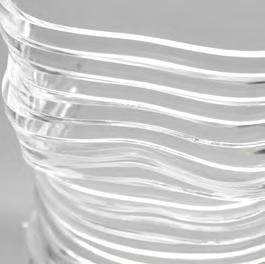
Challenging the role of the architect and transposing it within the context of a contemporary art gallery, a group of creatives are presenting independent works illustrating their collective understanding of where and how entropy persists, and when and why architecture needs to perform.
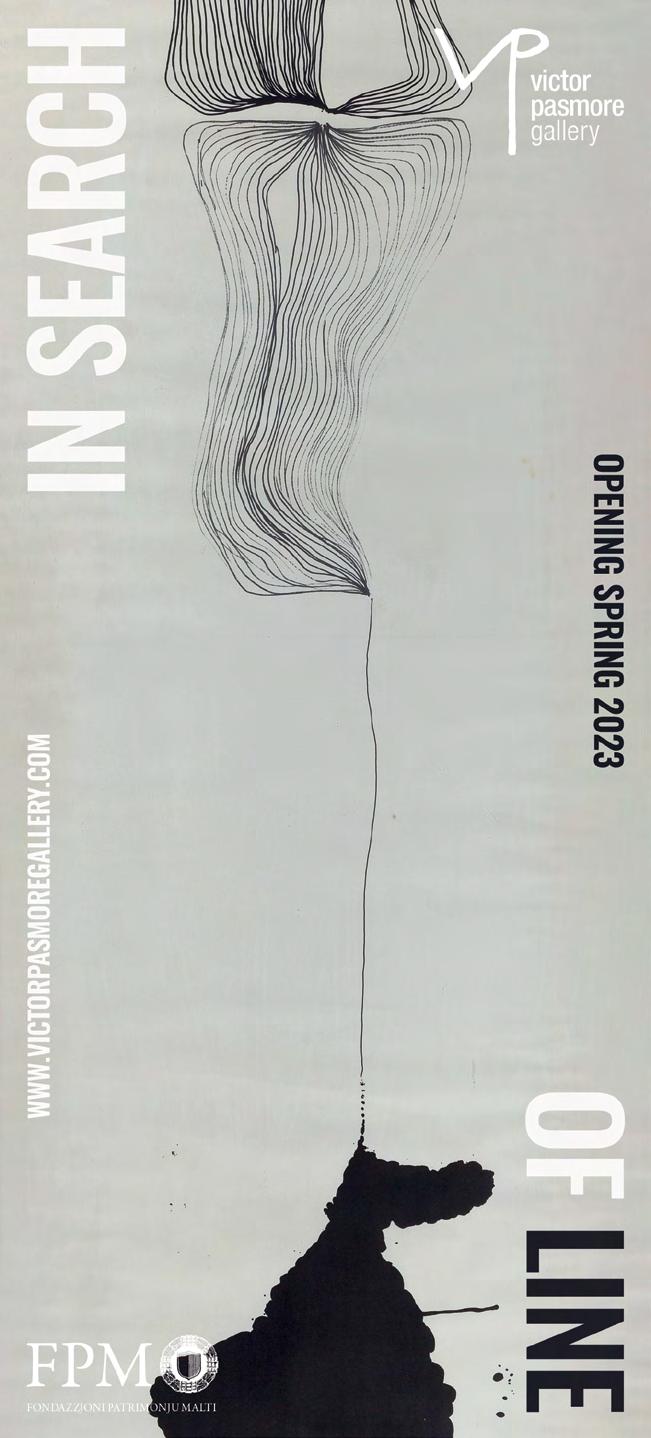
Valletta Contemporary, Valletta 3 December 2022 – 18 February 2023 www.vallettacontemporary.com
Insular
Cédrine Scheidig explores themes of identity and cultural hybridisation within the specific topography and temporality of the Maltese space in this photographic project that focusses on the everyday life and destiny of young men from the African diaspora who recently settled in Malta.
Spazju Kreattiv, Valletta 19 January – 19 February 2023 www.kreattivita.org
EXHIBITION PICK
Prestorjha Spazju Kreattiv Valletta 3 March – 9 April 2023
A solo exhibition by Enrique Tabone featuring works of contemporary art on the theme of the female figure in prehistoric Malta and Gozo. Works in this series include objects made from the artist’s signature use of plexiglass, site-specific installations, as well as video art and art prints. www.kreattivita.org
100 · Treasures of Malta 85, Christmas 2022
Valletta Baroque Festival
Organised by Festivals Malta, under the artistic direction of Kenneth Zammit Tabona, the festival is delivering an exquisite programme of 36 baroque concerts that will be held in over 20 opulent venues, reviving the grandiose Maltese heritage in baroque churches and palazzos.
Spanning from the 17th to the mid18th-century, the etymology of Baroque came from the Portuguese
Carpentier and François Lebrun concluded: “in the 17th century, thanks to the prosperousness of the Order, Malta became a mostra, a permanent exhibition of baroque art apogee: architecture, sculpture, painting, ornamentation”. The High Renaissance movement along with its successor Mannerism, chronologically positioned between the High Renaissance and the Baroque periods, gave birth to a new sophisticated and elaborate cultural expression. The spirit of Baroque embodies theatricality, and opulence; this lavish multidisciplinary movement encompasses paintings, sculptures, architecture, and music and the little island of Malta has it all.
with Valer Barna-Sabadus, to Vasillis Varvaresos, Avi Avital, and many more.

locution ‘Barocco’, which means ‘irregular pearl’, nodding at the time when jewellers would create elaborate brooches. With Papal Rome being the home of Baroque, through the dramatic sculptures of Bernini in the Vatican and the emotionally intriguing work of Caravaggio spread all over Italy, it was only a matter of time until its spirit and zeitgeist traversed the seas over to Malta.
At the time, Malta was a rich European microcosm. The Knights of St John did not only inspire the Maltese aristocrats to take on the baroque way but also to embrace Baroque as an integral part of the community’s identity. As Jean
Fast forward to the 21st century and to this day the Baroque movement still stands the test of time. A testament to this is Festivals Malta’s Valletta Baroque Festival, the quintessential experience of all that is Baroque, an alluring complement to the agency’s exceptional portfolio of events. Now in its 11th edition, the festival presents a star-studded programme spread over three weeks between the 11th and 29th of January, featuring Europe’s fnest; from Mahan Esfahani, to Charlie Siem, Gabetta Consort
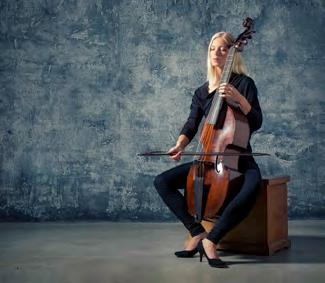
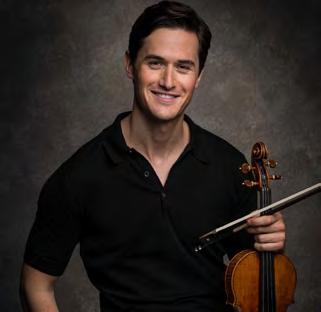
Alongside the prestigious line-up, artistic director Kenneth Zammit Tabona guarantees a versatile interpretation of the Baroque idiom, combing Baroque concerts with rock music, jazz, and 20th-century and contemporary compositions. The programme also includes unconventional works such as, ‘Buxtehude: Membra Jesu Nostri’, ‘Beware the Spider’, and ‘Kuhnau Biblical Sonatas’. This year the Valletta Baroque Festival will also present a world premier of a mass by Italo Maltese composer Girolamo Abos, ‘Abos Mass in G’, which will be performed by the festival’s vocal ensemble, The Monteverdi Project and Cantarlontano, under the musical direction of Marco Mencoboni at the Jesuits Church in Valletta.
The Valletta Baroque Festival extends an open invitation for all. Whether you are new to the genre, or an avid fan of baroque period music, the festival, with its traditional instruments, spectacular venues and world class performers, lives up to the expectations and beyond.
Tickets and information: www. festivals.mt/vbf
The
makes a Grand Return for its 11th Edition this January 2023.
Avi Avital
Charlie Siem
Johanna Rose
Photo by Luis Castilla


 FONDAZZJONI PATRIMONJU MALTI
FONDAZZJONI PATRIMONJU MALTI
















 THE MARTIN LAING FOUNDATION MR JEAN CLAUDE GANDUR
THE MARTIN LAING FOUNDATION MR JEAN CLAUDE GANDUR



















